Thinking About Adding AM to Your Shop? Here's Advice from Someone Who's Been There and Done That (Watch Video)
Knust-Godwin provides contract manufacturing products and services to aerospace, defense, semi-conductor, petroleum, energy and general industry. It is a turnkey, precision machining and part finishing company with many related specialties, including additive manufacturing. Michael Corliss, VP of Technology, recently explained the role and expansion of advanced additive manufacturing at Knust-Godwin -- and how it has benefitted the company.
Q: What made your team at Knust-Godwin decide to add Laser Powder Bed Fusion (L-PBD) metal additive manufacturing (AM) machines to your capabilities?
MC: Projects typically start by testing and doing two or three iterations. We introduced metal AM as an alternative to our mainly subtractive manufacturing approaches because it has the ability to address these starts and adjustments very efficiently.
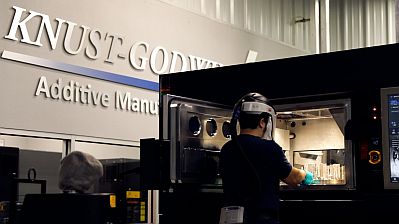
Most customers are looking for steady, repetitive production in significant volumes. However, some customers are trying out markets first with small volumes produced via AM. Hopefully, for them, a fast, market trial effort turns into full production. We're also seeing interest in near and on-demand production for flexible inventory fulfillment.
Q: What kind of AM volumes can you generate in the test and series-production scenarios and on-demand mix
MC: With printing products, volumes are limited to machine capabilities. We have the new eight-laser Velo3D Sapphire XC coming out that will allow us to do higher volumes in one build. But right now, the existing one- and four-laser AM machine sizes dictate the production volumes. And some products are only one component per build, per machine. In other cases, you may have hundreds of little products in the chamber at one time.
Q: What is the argument for an OEM, of any size, to purchase their own AM machines versus taking advantage of contract manufacturers?
MC: Knust-Godwin has 12 years of experience in metal AM. That's a big head start over OEMs in the time-to-market race. Investment-wise, all of the hurdles that an OEM is going to face introducing AM in-house, we've already experienced and resolved. Some AM-experienced OEMs, however, own machines and are there to help contract manufacturers, such as us, sort out the preliminary work and testing. Otherwise, we do that work and tie up machines that could be used for production.
VIDEO: Sapphire 3D Metal Printer Overview
On the other hand, once an OEM has purchased an AM machine for test and pre-production validation, they probably don't want to invest in multiple systems for full manufacturing. They would assign that role to a contract manufacturer. It's a very fluid, effective relationship at times.
Q: What challenges did you encounter with the first AM machines, and how did you overcome those challenges?
MC: The biggest challenge was educating the customers, trying to get them to understand that we could create an AM product that was equivalent to traditional, wrought manufacturing. A significant amount of that education effort revolved around making samples of legacy parts for them to try out. In doing this, we could illustrate the functionality, cost savings, lead-time reductions, and value of AM for direct-part replacement.
Occasionally, we would go a bit further. In advanced AM samples, we eliminated some secondary processes and potential leak problems for downhole applications -- lead plugs, welding, and so forth. Things that allow for better product design. But we didn't get too carried away with customers. We were mainly trying to show them a direct-replacement part and how efficient AM could work for that application set.
Q: Does Knust-Godwin provide design services?
MC: Most often we are working with a customer's design and collaborating on best steps toward manufacture. However, some ambitious products are not manufacturable conventionally, as designed, and a stopping point is hit. It is there that I have stepped in and said, "It can't be done conventionally, but we can print this part. And if we print this part, I can give it to you just like you designed it." And we are still making that component today as a printed part.
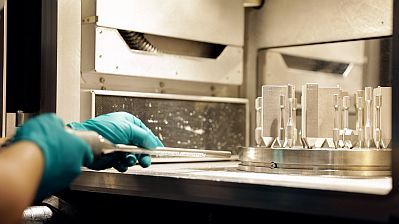
Q: Would you say that industry continues to be risk-averse to AM?
MC: Yes, companies are risk-adverse about manufacturing in general and AM most significantly. But there are more and more additive specifications coming out such as API to reduce risk and uncertainty. We're increasingly working with our customers, primarily in oil & gas and the majors, using API and other standards. We collaborated with Velo3D on API guidelines to help people better adapt to additives. AM adoption is on the rise partly as a result of standards.
Q: In terms of finished parts and testing them to make sure that they meet your customer's specs, what is your team doing?
MC: We print mechanical samples with every build, whether required or not. That practice will validate the mechanical properties and determine if they meet the wrought material standard, which is our target. There are a few limitations with those side-by-side comparisons, naturally, but everyone understands the goals and process.
In addition, customers are developing their own internal specs for 3D printed materials. We work with those, too, and test against them. We can pressure-test in-house. It's an end-to-end validation done here using customers' specs and/or the wrought material standard.
Q: Can you describe the evolution of your early experience with AM, in training your people and in purchasing different AM systems for different applications?
MC: Training our people in AM was an initial challenge because, all of a sudden, an outside product is coming into the facility that's nearly complete, better than near-net shape. The operators that do the traditional machining have to take that metal AM component -- with no upfront input from them -- and complete it to spec. Today, you scan this diameter, establish this datum, and do straightforward machining here and there to complete the part.
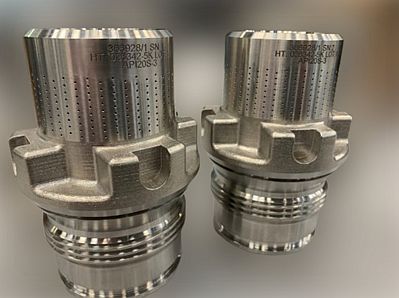
In the old days, some of the systems required you to add additional material in order to print the part. With the Velo3D Sapphire system, we don't have to add that material. We can print parts precisely to the model. So, there's less labor and uncertainty. That is an evolution from where we previously added stock, added numerous supports, and did extensive post-processing. Now we're able to do many parts without supports.
Q: Are you going to explore distributed manufacturing between various locations?
MC: As long as it's not ITAR or governed by ITAR, yes. We have oil and gas, and other industries that we should be able to share and distribute files among for printing at different locations -- ours or theirs. We're in the very beginning stages. Distributed manufacturing using AM is a promising concept we're going to explore with Velo3D and our customers.
Q: Can you provide any metrics about AM versus conventional manufacturing in terms of time, cost, part innovation, or customer satisfaction?
MC: At the beginning, with a single-laser system, we weren't able to be competitive on pricing against traditional manufacturing. But lead time was basically cut in half. Clearly, I couldn't provide AM parts cheaper back then. However, we could provide them quicker. Many times that won customers over. But going forward, when we started working with different, newer systems, we began to see a 10 to 15 percent cost reduction for direct-part replacement, and the shorter lead times.
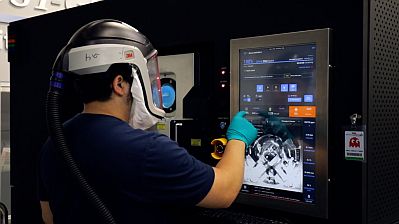
But when you start to design for additive’s benefits -- part-consolidation, lightweighting, and so forth – that's when you began seeing the big game changers: your 30- to 50-percent cost reductions, much shorter lead times, from standard 20-something weeks down to 6 weeks. Hipping [heat treatment], annealing, and aging -- those still take time. You still have to do finishing processes. Yet we're seeing these significant metrics when we combine parts and assemblies.
I've got customers for whom we've combined 25 parts into 1, 41 parts into 1, 60 parts into 1. We're printing those routinely. Now you have less purchasing, less handling, less assembly, less tracking, no mating surfaces and related tolerance issues, and it's all put into one piece. Those AM projects are big game changers, cost-wise.
Q: What's been the broad impact of advanced metal AM systems on product innovation?
MC: Advanced metal AM is widening the scope of features and design strategies that engineers can realize through to manufacturing -- giving us final designs none of us could manufacture before. On top of design innovation, we're seeing more and more customer demand for the Velo3D Sapphire XC system because of its greater output and reduced post-processing. The larger build volume and speed of the new system is an industry changer. The more lasers you have, producing parts faster -- within this calibration and reporting system -- that's how you're going to quickly gain traction for AM across industries and further spread innovation.
Q: Can you talk about the economics of larger build chambers and increased use of lasers?
MC: I don't know the exact XC numbers yet, but I know from experience that stepping up from single-laser systems to four lasers came with a tremendous increase in throughput and speed. With this larger eight-laser system, I expect to see builds done five-times faster, yielding a 75 percent reduction in cost.
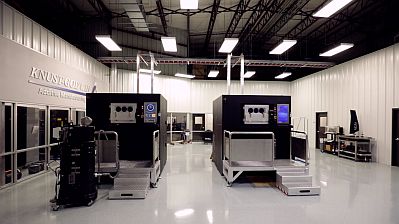
With the Velo3D Sapphire XC system, of course, we will also have the added benefit of printing very low angles, very complex geometries and passageways, and without supports and DfAM restrictions. This is what we are quoting our customers on future projects.
Q: What difficulties have you had with supply chain issues in the last couple years, and where does this new metal AM paradigm come in?
MC: I'll go back further than two years. Some of our customers moved products out of the country in past decades. COVID was a big turnaround and accelerator for us in terms of Reshoring. The offshore supply chain couldn't produce or ship their products. Domestic companies were reducing their volumes to adjust. All of a sudden, everyone's looking to AM for agility and to fill the gap. And here we are today producing their product faster, in small or extended lots as needed, and with no tooling expenses involved if their components were previously cast.
The supply chain crisis was an ideal opportunity for us to manufacture products with metal AM. To show our customers that those parts are equivalent or better than cast and wrought processes. Some have now stopped ordering cast parts. There may become a tipping point in the future where the demand for AM parts outpaces capacity, and an AM "farm" is needed. But until then, we're able to keep up with demand for direct-part replacements, along with more complex, novel components. In-Shoring instead of Off-shoring is a real trend.
Want more information? Click below.
Rate this article
View our terms of use and privacy policy